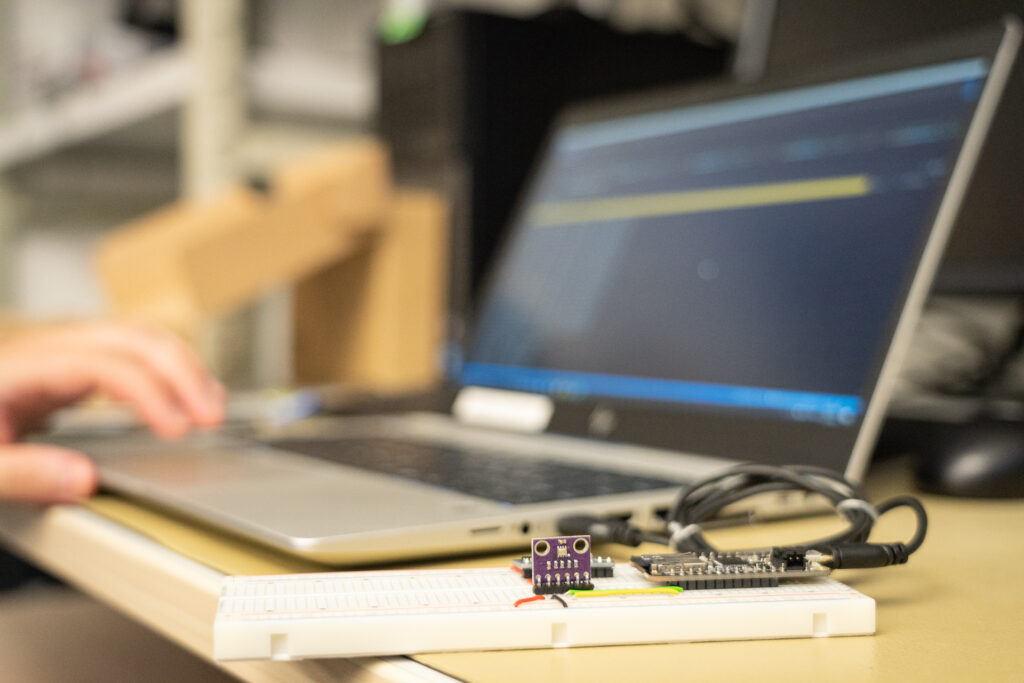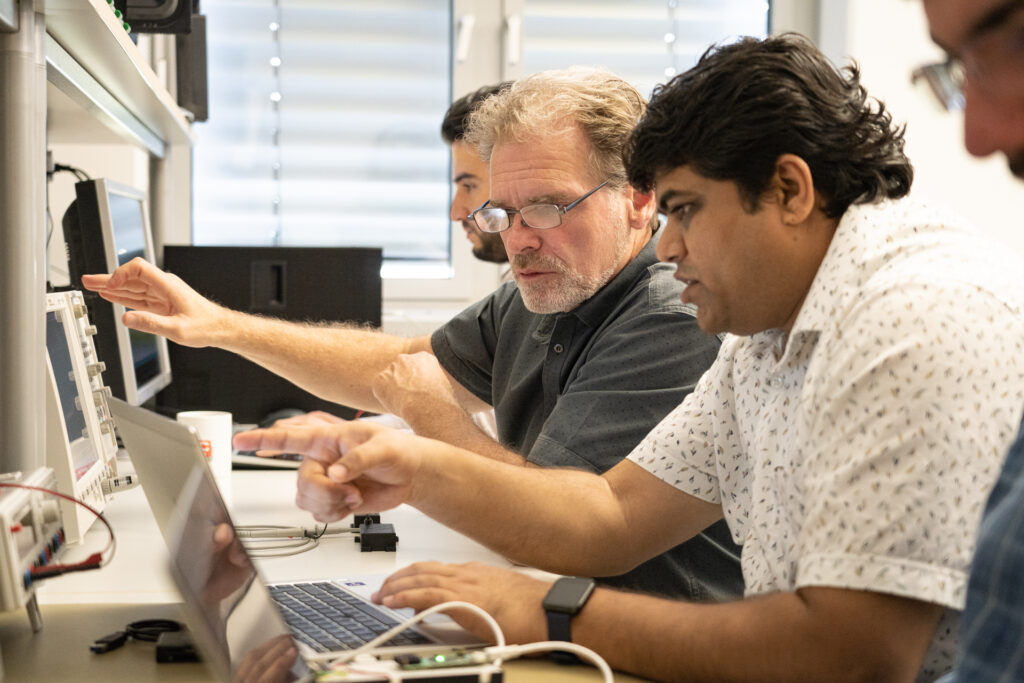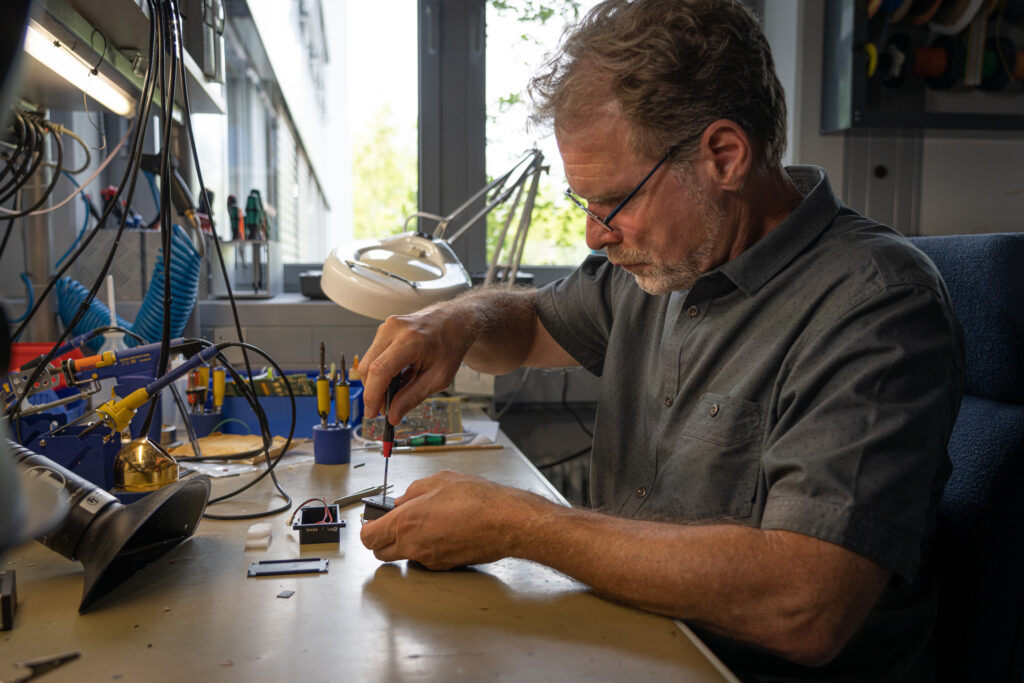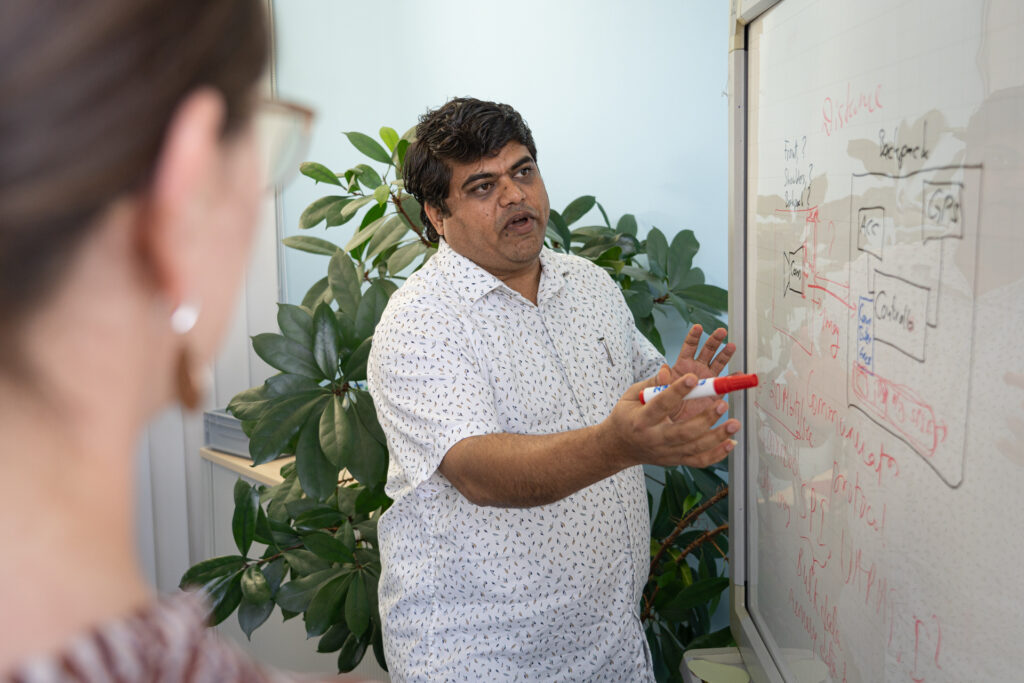To meet the goal of the GAIA Initiative to develop and put into practice a high-tech early-warning system for environmental changes, a new generation of animal tags is a key component. Teams at Fraunhofer IIS are working on the hardware and software development of miniaturized animal tags with lowest-power sensor technology with camera and image processing. The tags will be energy-autonomous, optimally adapted to the anatomy of vultures and are the basis for further technological features under development such as on-board artificial intelligences for behaviour detection and image recognition as well as a satellite-based IoT communication system.





When designing and developing hardware components for animal transmitters, such as those to be used in this project, the developers at Fraunhofer IIS have to take various requirements into account. On the one hand, the transmitters must be able to function completely autonomously over a long period of time and under difficult (climatic) conditions. On the other hand, the tagging of wild animals or birds, such as vultures, must not lead to any impairment of their behaviour. This limits the possibilities for the implementation of the housing and the installed electronics and mechanics enormously. In order to adapt the tags to the anatomy of vultures and make them fit for the planned application scenarios, the researchers are developing a sophisticated system concept. This is based on ultra-compact camera modules, miniaturized sensor technology (GPS, temperature, acceleration, etc.) and energy-efficient AI microcontroller boards. To ensure that the animals and objects (e.g. herds of animals, carcasses, vegetation) detected from the vultures’ point of view are reliably identified and transmitted in the form of image data, such an animal transmitter must be optimally installed. In order to guarantee the 100% functionality of the transmitter, the engineers are working out the next development steps in iterative processes together with the project partners.
The embedded software for AI microcontrollers developed by the researchers enables intelligent image acquisition on the one hand and sensor-related (image) data processing directly on the edge device on the other. The key advantage of this onboard processing and energy-efficient pre-processing is that only the images that are useful for the research activities are transmitted in real time and via IoT communication link. Constraints that would result from the energy-intensive transmission of all raw data are thus circumvented.
To ensure robust transmission of the extracted image and sensor data, the developers implement a powerful satellite IoT radio module in the transmitter.The communication system developed by the Fraunhofer IIS is based on the terrestrial mioty® technology. In the project, the system is applied to the satellite scenario. In addition to the implementation in the animal transmitter, the receiver on the satellite must also be adapted so that the transmitted information can be received and processed there. This development of a bidirectional communication link not only ensures robust and energy-efficient data transmission to the satellite, but also parameterization and control of the transmitting nodes at the same time.








